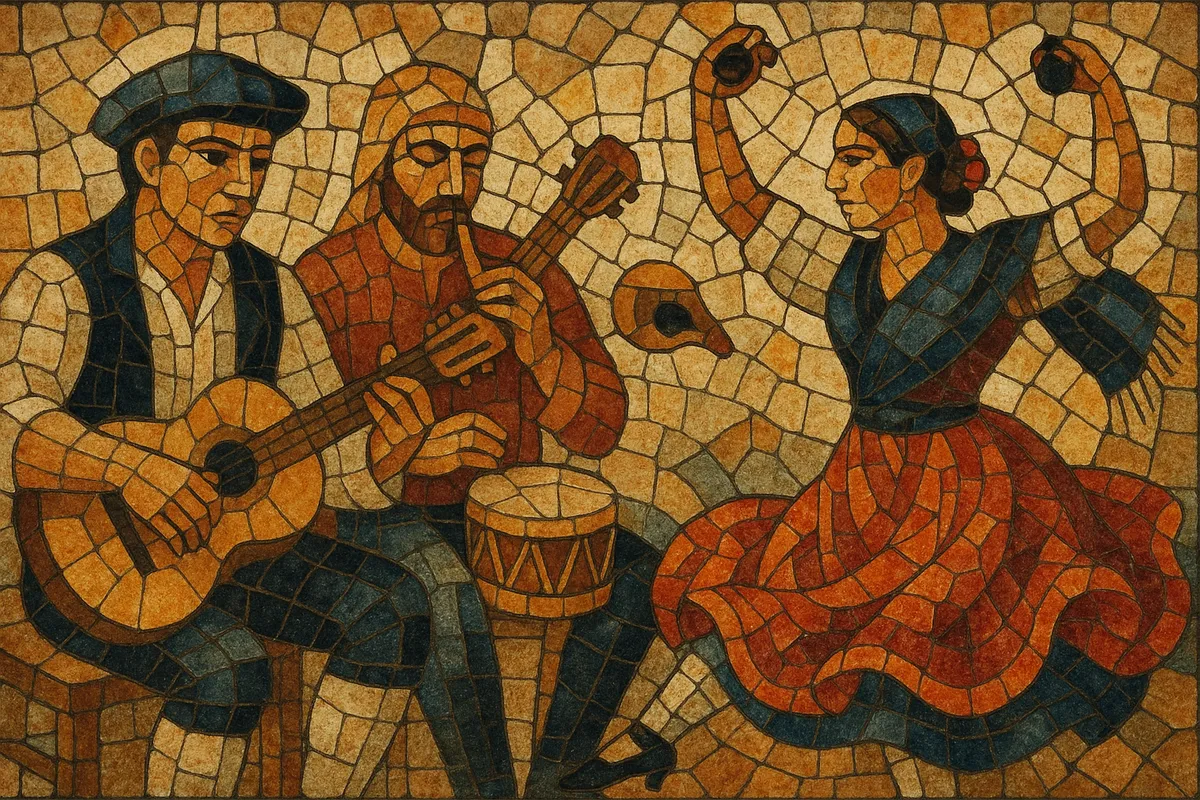Jota is a fast, lively Spanish song-and-dance tradition most closely associated with Aragón, but performed widely across Spain (Navarra, La Rioja, Castilla, Valencia, Galicia) and in former Spanish colonies. It is typically in a brisk triple meter (3/4 or 6/8) with characteristic hemiola accents and virtuosic footwork (zapateado).
Performances pair strophic, often improvised coplas (verses) with dance sections accompanied by guitars, bandurria, laúd, hand percussion (castanets, tambourine), handclaps, and, in some regions, shawm (dulzaina) and drum. Melodies are usually in major mode with bright, ringing vocal delivery, and the harmony tends to be simple and diatonic, driving the dance.
Jota is both a village social dance and a stage form. It has inspired many classical composers and remains a powerful symbol of regional identity and celebration.
Jota crystallized in Aragón during the 18th century, drawing on older Iberian folk song-and-dance practices. Its energetic triple meter, call-and-response singing of coplas, and ornamental footwork reflect an interplay of rural dance customs and pan-Iberian verse traditions.
By the 19th century, regional variants flourished: the Jota Aragonesa (often the most virtuosic), Jota Navarra, Jota Riojana, Jota Castellana, Jota Valenciana, and Jota Gallega. As the dance moved from plazas to salons and theaters, it was stylized for stage presentation with large rondalla ensembles (guitars, bandurrias, laúdes), choreographed formations, and dazzling castanet work. Classical composers embraced the style: Mikhail Glinka (Jota Aragonesa), Pablo de Sarasate (Jota Navarra/Airs espagnols), and Bizet (L’Aragonaise) incorporated jota idioms into concert works, amplifying its prestige.
Folkloric troupes, regional festivals, and competitions sustained and codified the jota’s vocal and dance techniques. Radio and recording popularized star joteros and joteras, while folk-revival and fusion artists reimagined the form with contemporary arrangements. Today, jota remains central to Aragonese and wider Spanish cultural identity, appearing at fiestas, pilgrimages, and on concert stages, and it continues to influence songwriters and folk ensembles in Spain and beyond.


